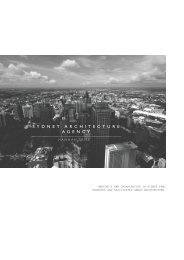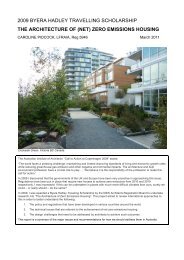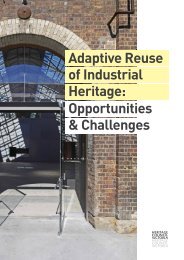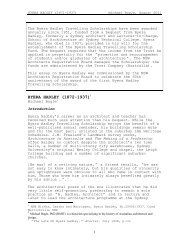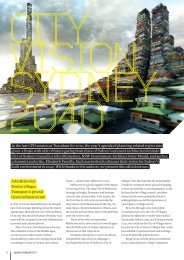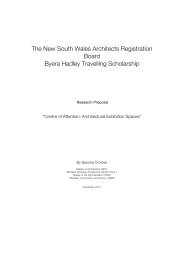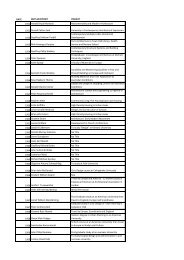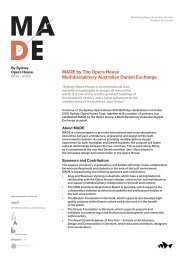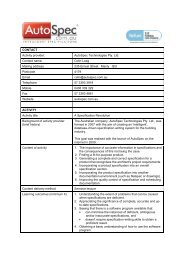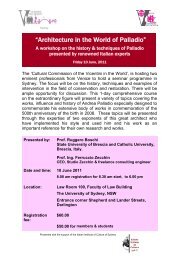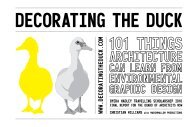spatial experience narrative and architecture - Architecture Insights
spatial experience narrative and architecture - Architecture Insights
spatial experience narrative and architecture - Architecture Insights
You also want an ePaper? Increase the reach of your titles
YUMPU automatically turns print PDFs into web optimized ePapers that Google loves.
SPATIAL EXPERIENCE, NARRATIVE & ARCHITECTURE - BYERA HADLEY REPORT 255.0 REFLECTIONS/ CONCLUSIONS5.0REFLECTIONS/CONCLUSIONS5.0 REFLECTIONS/CONCLUSIONSFilmic space can propose a different relationshipbetween <strong>architecture</strong> <strong>and</strong> people based on a broaderrange of sensory, social <strong>and</strong> temporal qualities. Aninvestigation into the construction of space, bothintellectually <strong>and</strong> physically reveals the variety ofmeanings <strong>and</strong> implications that attend the term‘space’.The 12th International <strong>Architecture</strong> Exhibition,Venice 2010 teaches us how those who engagewith temporary events in the city, such as festivals<strong>and</strong> exhibitions underst<strong>and</strong> that <strong>spatial</strong> <strong>experience</strong>can come into being <strong>and</strong> change through thesetemporary events. The select exhibits discussed inthis paper examined a plurality of approaches to,<strong>and</strong> ways to <strong>experience</strong> architectural space. Theaim of this was to explore practical techniques thatmay subvert conventional ways we perceive anarchitectural or urban condition.A parallel can be drawn between the temporaryconstruction techniques used for exhibition/ film setconstruction <strong>and</strong> those used for the constructionof the architectural redevelopment project ‘TheChurch’ in Sydney. The ambition for this projectas a ‘reversible’ construction borrowed more fromthe traditions of film <strong>and</strong> exhibition design <strong>and</strong>construction than that of <strong>architecture</strong>. The <strong>spatial</strong>flexibility for both functional <strong>and</strong> social programis also similarly increased. This approach to anarchitectural project is now more important than everas we are living in a time where building life cyclesare speeding up. The life expectancy of a building isgetting shorter, <strong>and</strong> architects need to start engagingwith adaptive re-use projects for a more relevantcontemporary use.A research project of this nature challenges theprofession of <strong>architecture</strong> to critically revise currentnotions of <strong>spatial</strong> thinking <strong>and</strong> <strong>spatial</strong> intelligence,<strong>and</strong> re-establish the trade within more extensivenetworks. Those practitioners who merge thedisciplines of <strong>architecture</strong>, art <strong>and</strong> film as theirpractice explore new ways to negotiate architecturaldesign problems in the present. In film, spaceis <strong>experience</strong>d through sounds, motions <strong>and</strong>e-motions. Film as a medium also allows the viewerto switch between parallel time <strong>and</strong> story streams,depending on one’s own knowledge, associations<strong>and</strong> imagination. A filmic approach to space impliesdifferent models for contemporary living <strong>and</strong>suggests an exp<strong>and</strong>ed field of architectural activitiesfor the contemporary practitioner. It is therefore agood material of study to exp<strong>and</strong> our underst<strong>and</strong>ingof <strong>architecture</strong> <strong>and</strong> change the way we go aboutmaking it.



